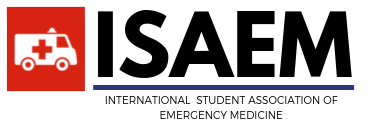Dr. Anh-Nhi Thi Huynh and Dr. Larshan Perinpam – Denmark ??
Thanks to ISAEM for giving us the opportunity to share our experiences with COVID-19 at the Emergency Department in Herning, Denmark. We were one of the most affected hospitals in Denmark by COVID-19. We quickly separated an area within the ED for diagnosed and possible COVID-19 patients only – a so called COVID-section. The COVID-section replaced our usual observation unit/beds where patients often was admitted for a maximum of 24 hours. This meant that all patients in need of observation or admission were directly admitted to internal medical and surgical wards.
On average we saw 50 patients/day in the COVID-19 section alone. Everyone has been working several extra shifts to handle the demand. An important change in the ED in Denmark is the reorganization and extra demand of ED staffing. As EM is still a new and developing specialty in Denmark, we were unable to upscale our ED doctors 24/7 to treat all COVID and non-COVID patients. Therefore help was coming from other specialties (ex. surgical and internal medicine). This reorganization of the usual ED staff showed the importance of maintaining ED doctors as the directors of all help coming from outside to maintain the usual flow, triage and initial treatment and diagnosis.
Other factors such as the environments and equipment were of great importance.
We quickly solved big issues such as equipping the system to provide high volume of oxygen to 50 COVID-19 beds at the same time within a small area (which our system was not built for). We struggled with the physical settings which were not built for 50 COVID-19 beds. The space and distance among staff members were limited.
As the patients came much quicker than we anticipated, and as we were one of the first places to get hit by the high volume of COVID-19 patients in Denmark, our lessons were learned with a high cost. 60% of all our staff members got COVID-19 themselves which has resulted in a lot of challenges with staffing the department. Currently most of our nurses and doctors are back to work to continue delivering on the frontlines in the fight against COVID-19.


